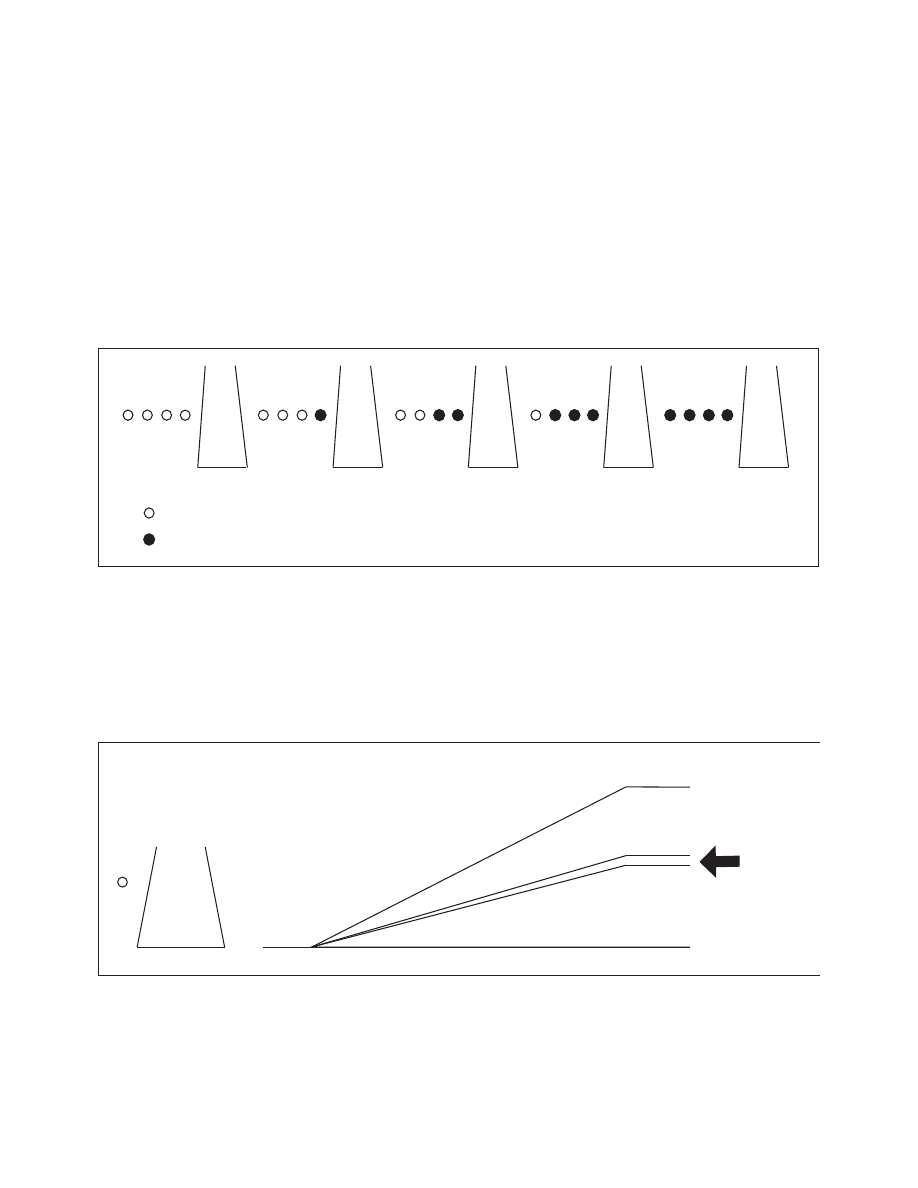
AIM
4/3/14
2−1−4
Airport Lighting Aids
b. Precision Approach Path Indicator (PAPI).
The precision approach path indicator (PAPI) uses
light units similar to the VASI but are installed in a
single row of either two or four light units. These
lights are visible from about 5 miles during the day
and up to 20 miles at night. The visual glide path of
the PAPI typically provides safe obstruction
clearance within plus or minus 10 degrees of the
extended runway centerline and to 4 SM from the
runway threshold. Descent, using the PAPI, should
not be initiated until the aircraft is visually aligned
with the runway. The row of light units is normally
installed on the left side of the runway and the glide
path indications are as depicted. Lateral course
guidance is provided by the runway or runway lights.
In certain circumstances, the safe obstruction
clearance area may be reduced due to local
limitations, or the PAPI may be offset from the
extended runway centerline. This will be noted in the
Airport/ Facility Directory. (See FIG 2−1−5.)
FIG 2
−1−5
Precision Approach Path Indicator (PAPI)
Slightly High
(3.2 Degrees)
White
Red
High
(More Than
3,5 Degrees)
On Glide Path
(3 Degrees)
Slightly Low
(2.8 Degrees)
Low
(Less Than
2.5 Degrees)
c. Tri
−color Systems. Tri−color visual approach
slope indicators normally consist of a single light unit
projecting a three−color visual approach path into the
final approach area of the runway upon which the
indicator is installed. The below glide path indication
is red, the above glide path indication is amber, and
the on glide path indication is green. These types of
indicators have a useful range of approximately
one−half to one mile during the day and up to
five miles at night depending upon the visibility
conditions. (See FIG 2−1−6.)
FIG 2
−1−6
Tri
−Color Visual Approach Slope Indicator
Amber
Above Glide Path
On Glide Path
Below Glide Path
Amber
Green
Red
NOTE
−
1. Since the tri
−color VASI consists of a single light source which could possibly be confused with other light sources, pilots
should exercise care to properly locate and identify the light signal.
2. When the aircraft descends from green to red, the pilot may see a dark amber color during the transition from green to
red.